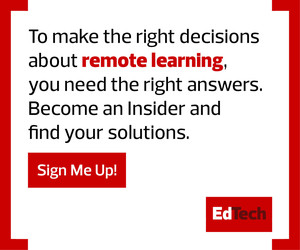EDTECH: What is your personal experience with digital equity, and how did that translate into a career in education?
DOERSCH: As a kid growing up on a rural farm in Wisconsin, I often felt “left behind” in the world because I didn’t have the resources that kids in urban areas seemed to have. That was many years ago, but I’m realizing that some kids may still be growing up feeling left behind, but in a different way, a digital way.
I wanted to do something to change that. As a former classroom teacher and technology leader in public schools, I’m personally committed to providing equity for all citizens.
EDTECH: For those who are still unclear about what digital equity means, is there a particular definition that you like?
DOERSCH: D’Andre Weaver, Digital Promise’s first chief digital equity officer, has a definition that I love. He defines digital equity as recognizing and dismantling inequitable systems, cultures, policies, mindsets and behaviors that impede communities from civic and cultural participation, employment, lifelong learning and access to essential services.
WATCH: This video to learn why digital equity is not a one-person job.
EDTECH: What does digital equity look like in practice for you?
DOERSCH: To me, it looks like the work we do through the Verizon Innovative Learning Schools initiative, which equips students and teachers at select Title I middle and high schools across the U.S. with devices, including tablets, laptops or hotspots (for schools with existing one-to-one device programs), and up to four years of a data plan for each student.
The initiative also provides schools with dedicated technology coaches who teach educators how to effectively integrate technology into the curriculum. Districts and schools also receive technical support from our team.
EDTECH: What inspired you to become involved with Digital Promise after retiring from public schools?
DOERSCH: As a person who has lived in the ed tech world for many years, it was difficult for me to think about coming to the end of my road when I hit retirement age because I have plenty of tread left on my tires.
I was fortunate enough to find Digital Promise and the Verizon Innovative Learning Schools initiative that would allow me to continue my mission to guide school districts toward digital equity.










